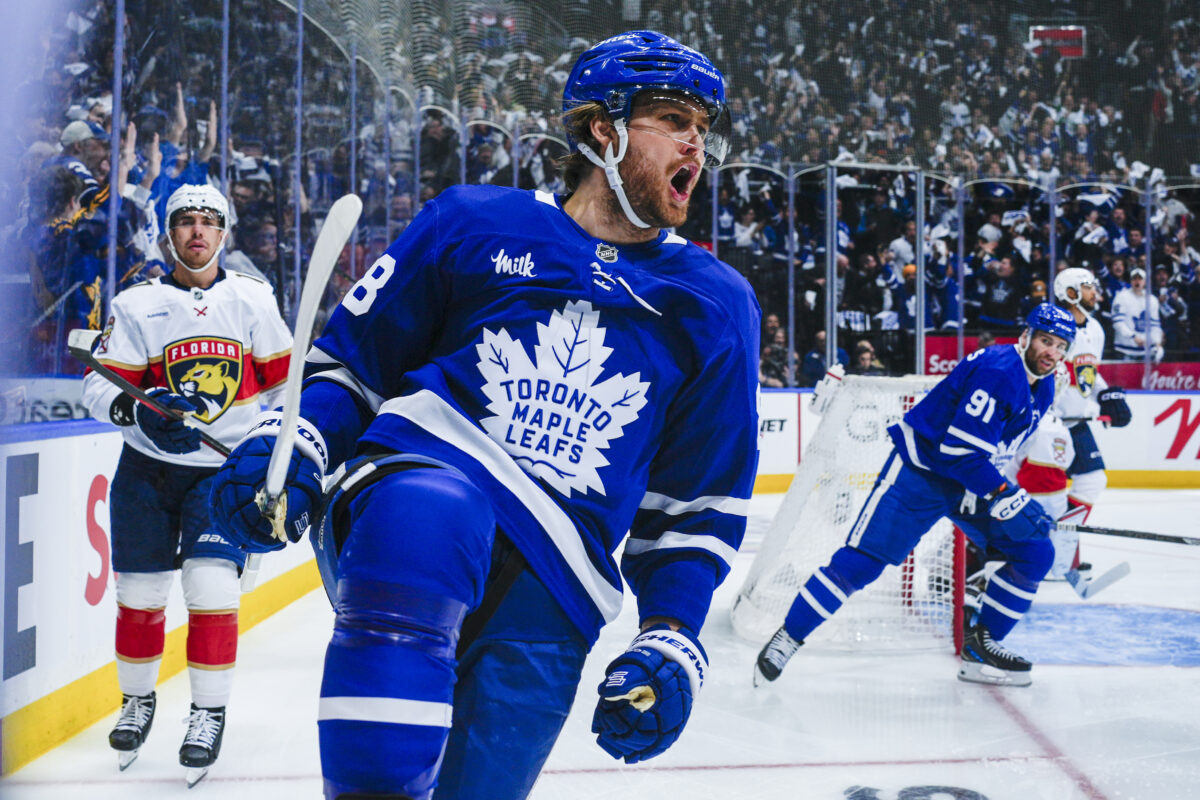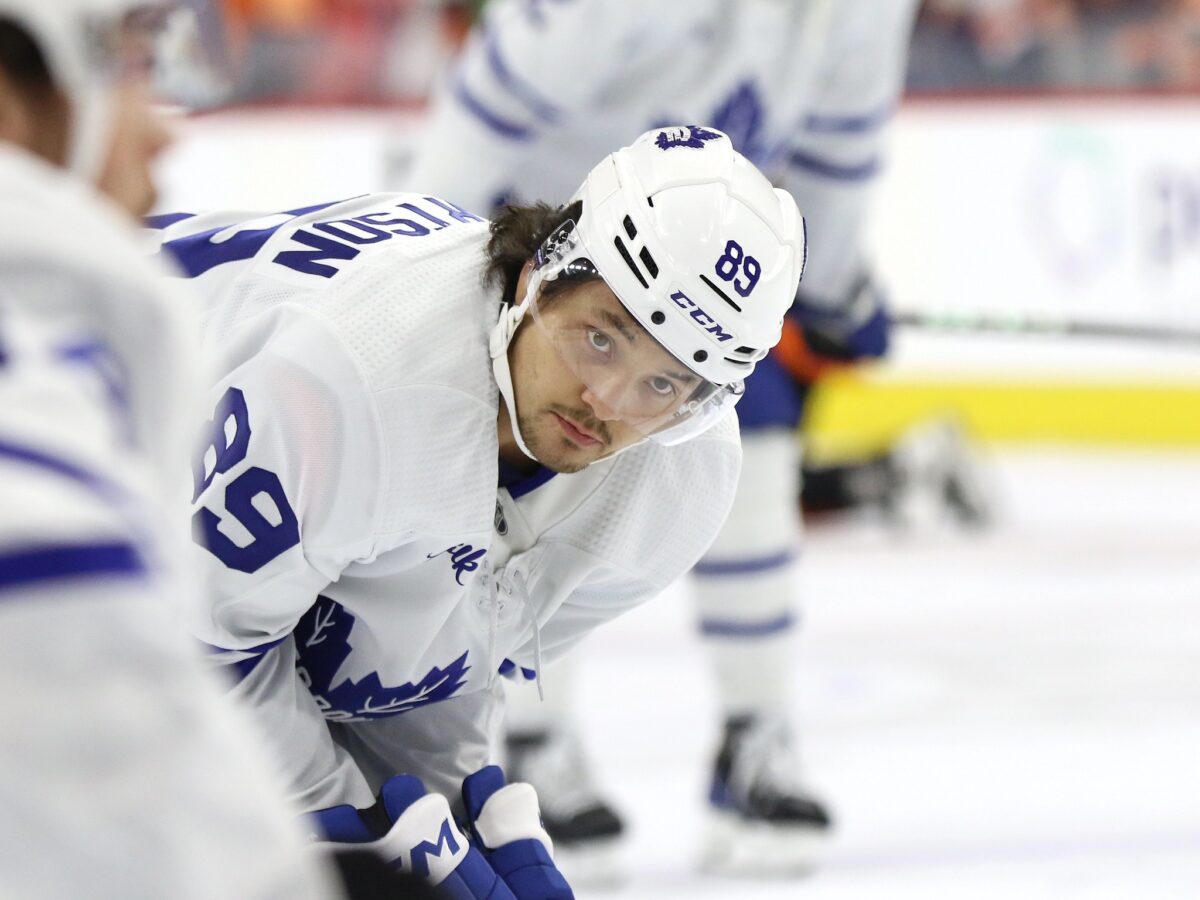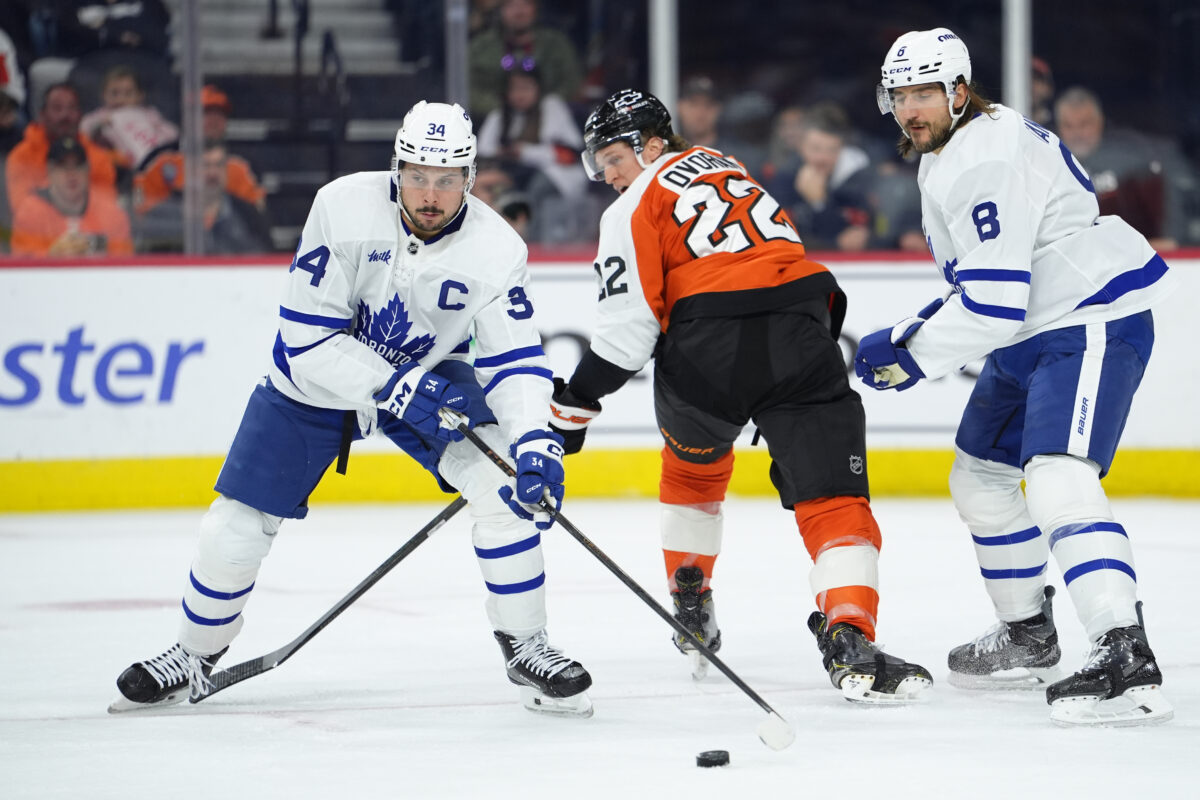If you’ve watched hockey long enough, you know that a team’s forward lines are never really finished. Coaches tinker, shuffle, and reimagine them almost daily. For the Toronto Maple Leafs, the top-six forwards are where all the big ideas live — and where the reality check always shows up.
Considering the Maple Leafs in Theory on the Whiteboard
That’s the thing about theory in hockey — it always looks great on the whiteboard. But the ice has a way of punching theory in the mouth. At the start of any NHL season, coaches sketch out their plans, and then the ice starts arguing back. What makes sense in theory doesn’t always survive the first few games.
Related: Maple Leafs’ New Faces Contributing to Early Season Struggles
That’s where the Maple Leafs are right now — somewhere between what’s planned and what actually works. Still, it’s worth stepping back to imagine what head coach Craig Berube might be thinking as he tries to turn early-season ideas into something that can actually work as the regular season rolls on.
Theoretically Speaking: The Cowan-Tavares-Nylander Line Is Where Experience Meets Spark
So far this season, the Maple Leafs’ lineup is a work in progress. Sometimes the chemistry works, sometimes it doesn’t. Let’s start with a trio that makes a lot of sense on paper and (hopefully) even more on the ice: Easton Cowan, John Tavares, and William Nylander.

(Photo by Mark Blinch/NHLI via Getty Images)
Cowan’s a kid who doesn’t back off. He goes straight into the corners and makes things happen. Tavares is the steady old pro — not flashy, but precise. He reads the game like a book he’s written himself. And Nylander, well, he’s the artist of the group. He’s the one who can make a play out of nothing.
What works here is the chemistry. Cowan and Tavares already seem to be building a quiet understanding — a kind of on-ice shorthand that only certain players share. Cowan digs pucks out, creates space, and Tavares finds ways to feed Nylander in motion. When it clicks, it’s smooth hockey. It’s the kind of hockey that can wear teams down over a full game.
Related: John Tavares Has Helped Easton Cowan Find His Place with the Maple Leafs
For Cowan, this kind of line is a gift. He gets to learn from one of the league’s smartest centres and one of its most naturally gifted wingers. The Maple Leafs hope this line gives them a dependable second unit and helps Cowan grow into the kind of player who’ll one day anchor his own.
Theoretically Speaking: The Knies-Matthews-Robertson Line Could Be a Glimpse of the Future
The other proposed combination is the flashier one — and maybe the more intriguing: Matthew Knies, Auston Matthews, and Nicholas Robertson.
This is the kind of line that could define what the Maple Leafs look like two or three seasons from now. Matthews, of course, is the centrepiece. With good reason, he’s the franchise cornerstone. Knies is the muscle and the grit, that rare young player who’s as happy banging in the corners as he is finishing a rebound in front. Robertson is the wild card — a shooter’s shooter, the kind of kid who sees daylight and lets it fly.

Put them together, and you could produce layers of offence. Robertson’s outside shot stretches defenders. Knies crashes the net and opens space. Matthews roams through the middle like a shark circling open water, waiting for his chance. When they’re in sync, you can almost feel the ice tilt.
Related: Maple Leafs’ Robertson Getting Results in Top Line Audition
This isn’t just about scoring, though. It’s about identity. If the Maple Leafs are serious about building toward something lasting, this could be their foundation — a hard, hungry top line built around their best player and the next generation waiting to prove itself.
Why These Lines Matter for the Maple Leafs
What makes these combinations look good on the whiteboard is that they don’t just chase short-term results. They help build a bridge. The Cowan-Tavares-Nylander unit gives you experience, stability, and leadership in real time. It also gives Cowan the environment he needs to grow. The Knies-Matthews-Robertson line, meanwhile, invests in the future — a glimpse of what could become a dominant trio down the road.

Together, in theory, they balance the roster. One line steadies the ship; the other sets the course. And, importantly, they leave enough depth below them to keep the bottom six intact. The Maple Leafs have learned the hard way that you can’t sacrifice balance in a long season — or a long playoff run.
The Bottom Line for the Maple Leafs’ Top-Six Forwards
In theory, these combinations look balanced, creative, and forward-thinking. In practice, they’ll face the same tests every Maple Leafs team does — pressure, injuries, and expectations that never seem to ease. But maybe that’s the point. Hockey’s not supposed to stay theoretical.
If Berube can turn early-season experiments into something that sticks, Toronto might finally have a top-six that plays like a plan coming to life — theory made real on the ice.
Related: Doug MacLean Sounds Off About What’s Gone Wrong With the Maple Leafs
It’s still early, and nothing’s set in stone. But what’s clear is that Toronto’s trying to do something smarter this time. As the season moves from October into November, the Maple Leafs’ top-six units aren’t just chasing chemistry — they’re trying to cultivate it. They’re not patching holes; they’re building chemistry.
If these combinations work, the Maple Leafs might finally be finding a top-six that can score and grow together. And that’s the kind of story every team wants to write before the regular season turns into the postseason.
